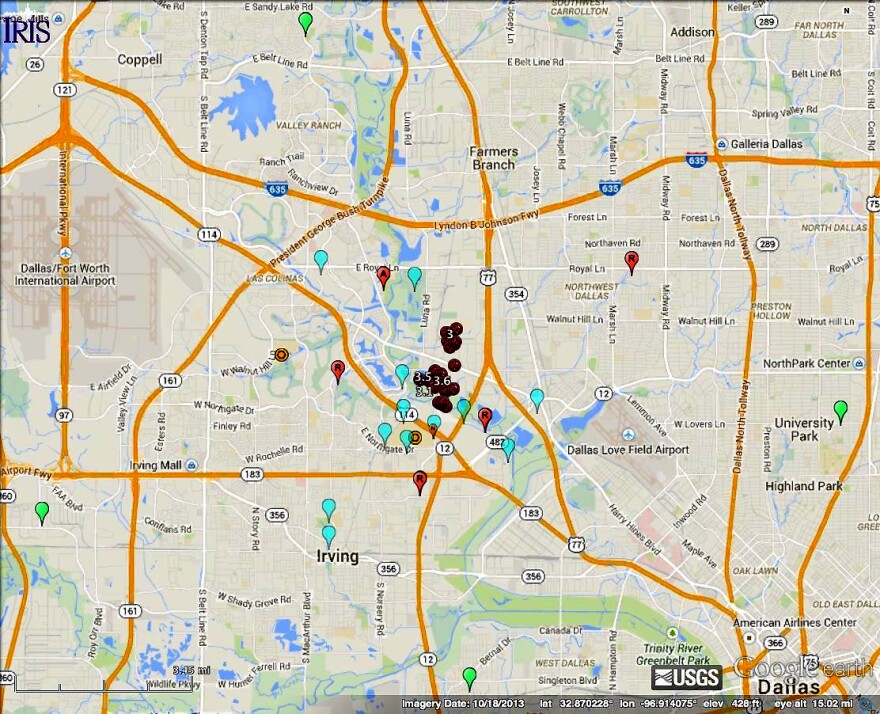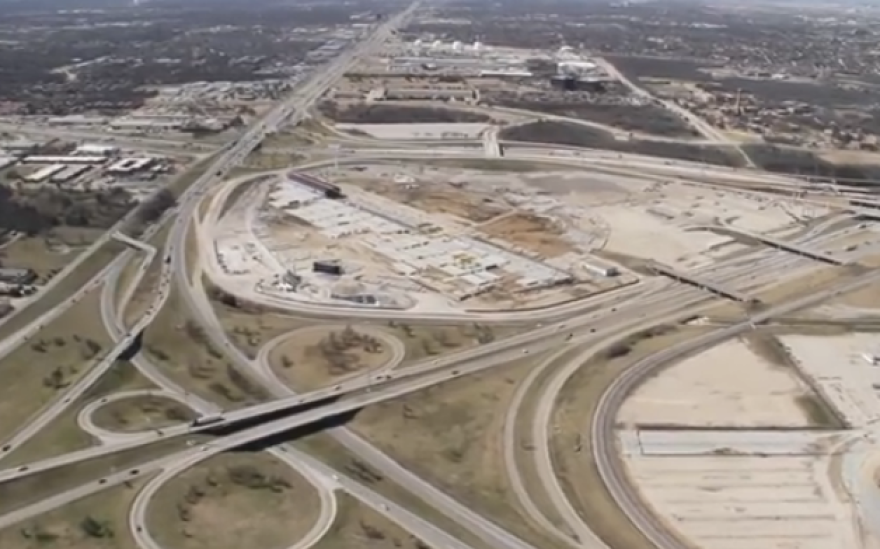Southern Methodist University seismologists have determined that the recent earthquakes that have rattled North Texas were concentrated along a two-mile line that indicates a fault from Irving into West Dallas.
Dozens of small earthquakes have struck near the old Texas Stadium site in Irving. Most of the quakes had a magnitude of 2 but one Jan. 6 was 3.6. SMU seismologists have used more than 20 monitors placed around the quake sites to study seismic activity.
The earthquakes have been relatively shallow. SMU and the U.S. Geological Survey on Friday released a preliminary report explaining so many people felt the quakes because their trigger points were only about three or four miles below ground.
Here’s what SMU says in a news release:
SMU and the United States Geological Survey (USGS) on Friday shared an interim report with the mayors of Dallas and Irving spelling out preliminary information gleaned after SMU’s installation in January of more than 20 portable earthquake monitors around the earthquake sites. “This is a first step, but an important one, in investigating the cause of the earthquakes,” said SMU seismologist Brian Stump. “Now that we know the fault’s location and depth, we can begin studying how this fault moves – both the amount and direction of motion.” “Then we can move on to what might have triggered it – examining factors both natural and manmade,” said SMU seismologist Heather DeShon. “Sometimes what triggers an earthquake can be very small, so all of these factors have to be considered when looking for that trigger.” The earthquakes have occurred in the granite “basement,” below the layers of sedimentary rock that make up the large geological formation known as the Fort Worth Basin, at depths between 4.5 and 7 kilometers, according to the report. It is not unusual for earthquakes to occur at different levels on a fault. Those depths are considered relatively close to the surface in earthquake terms, however, which helps explain why people as far away as Plano feel even smaller magnitude 2 earthquakes in the area.

Read the SMU report below.





